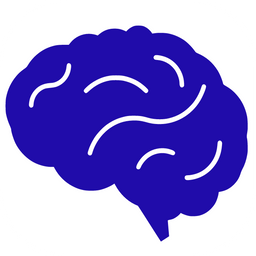KIS Summary:
- Understand what Paper 2 is — a calculator-allowed exam focused on data-heavy, applied questions similar in structure and weighting to Paper 1.
- Topic-by-topic GDC strategies — practical calculator tips for Number & Algebra, Functions, Geometry & Trigonometry, Statistics & Probability, and Calculus (including HL-specific advice).
- Study smarter, not harder — time management strategies, practice routines, and methods for reviewing with markschemes effectively.
Table of Contents
- What is Paper 2? How is it Similar to Paper 1?
- Key GDC Tips for Topics Assessed in Paper 2
- How to Study for Paper 2?
- Mistakes and Common Pitfalls to Avoid
What is Paper 2? How is it Similar to Paper 1?
You’ve now mastered Paper 1. If not, don’t fret, here’s a quick read to get you started:

The next not-so-major challenge in your Math AA journey is Paper 2, but you have your handy calculator – meaning you’ll tackle more data-heavy, applied problems.
These problems are organised similarly to those in Paper 1, where each preceding subquestion is pertinent to the subsequent one (answers or methods from part A are utilised to determine part B). It also has two sections for short and long response questions. Also note that the weightage and time conditions for this paper are the same as those of Paper 1.
Key GDC Tips for Topics Assessed in Paper 2
Whether you use a TI-84, TI-Nspire, Casio fx-CG50, or any other GDC, invest your time in learning shortcuts – this would be paramount in scoring a higher band!
Topic 1: Number and Algebra
- Solve simultaneous and nonlinear systems (use the right function tools).
- Practise solving exponential/logarithmic equations and other complex functions.
- Some GDCs have functions for compound interest; use them to save time!
(HL)
With the GDC, you can:
- Find binomial probabilities and verify expansions.
- Complex numbers in both rectangular and polar forms.
- Use matrix calculations.
Topic 2: Functions
- The GDC can plot and analyse functions: zoom, trace, and find intercepts or turning points.
- Understand domain and range restrictions when interpreting calculator graphs – some GDC versions do not let you set these.
- Remember to explain transformations clearly, even if your calculator shows the graph: f(x+a) shifts left, f(x−a) shifts right, a f(x) stretches vertically.
(HL)
- Use polynomial graphing and factorisation tools to check solutions quickly.
- Use solver and table functions for inverse and composite functions.
- Practise analysing piecewise and modulus functions visually.
Topic 3: Geometry and Trigonometry
- Learn to use radian mode correctly; switching between degrees and radians is an expensive yet common mistake.
- Locate the keys and graph sine/cos/tan functions.
(HL)
- Practise vector calculations (dot/cross products) using calculator matrices.
- Solve 3D vector equations and find angles between planes/lines.
- Double-angle, reciprocal, and inverse trig functions often appear; verify symbolic work.
Topic 4: Statistics and probability
- Perform regressions and interpret correlation using statistical features.
- Use your GDC’s STAT mode to calculate mean, median, standard deviation, and regression.
- Practise creating scatterplots and interpreting correlation correctly.
(HL)
- Explore normal/binomial distributions, and interpret cumulative probabilities.
Topic 5: Calculus
- Differentiate, integrate, and solve equations graphically; always check the setup yourself.
- Interpret results – the GDC won’t do that for you: derivatives show rates of change, integrals show accumulated value or area.
(HL)
- Be fluent with numerical integration methods (trapezium rule, GDC integration).
How to Study for Paper 2?
1. Time is money (and mark!)
- Besides the GDC, being timely is a mastery skill for this paper - and time flies, especially for HL, so stay on track.
- Skim the paper in the first few minutes to preview question types, the allocate time per question based on its mark weight, keeping in mind the # of subquestions.
- For example:
- SL: 25 - 30 minutes per large question
- HL: 35 - 40 minutes per large question
- Leave at least 5–10 minutes at the end to check calculator inputs and answers.
2. Practising with accuracy makes perfection.
- This paper requires stricter time conditions than Paper 1, so practice complete papers weekly or at least one Section A + one Section B under exam-style conditions.
- After each practice, review in depth with the markscheme beside you.
3. General Tips
- Download the IB syllabus and make a list of key topics for Paper 2.
- The IB rewards working (method, accuracy) and reasoning, not just the final answer.
- Understand command words and what they require of you, and use correct mathematical language whilst answering (“therefore”, “hence”, “∴”).
- Log your errors to track mistakes and misconceptions.
Mistakes and Common Pitfalls to Avoid
- Over-reliance on the GDC → Write down equations and reasoning before verifying with your GDC. This is especially helpful to catch miscalculations (a common cost!)
- Misreading graphs or results. Calculator graphs can mislead if you skip domain or scale checks → Sketch a quick labelled graph and confirm it matches your GDC output (most graphing questions also require a rough drawing)
- Forgetting units or rounding carelessly → Round only in the final step (≈ 3 s.f.) and always include units.
- Skipping working → No steps shown = no method marks. Write it all down!
- Input or mode errors. One wrong entry, or radians instead of degrees, can ruin accuracy. → Check calculator mode before starting and sanity-check results logically. This is why those few extra minutes to recheck are crucial!
For more tips on exam strategy, check out these articles 👇



Want more personalised guidance to help support your child through their studies? Find a KIS Academics tutor today to support your child’s educational journey!
What Our Students & Parents Say
600+ Five-Star reviews across all our tutoring programs — hear why below !👇
Written by KIS Academics Tutor for IB, Adithi Potty. Adithi is currently studying for a Bachelor of Economics and Politics with International Studies at the University of Melbourne. You can view Adithi’s profile here and request her as a tutor.








